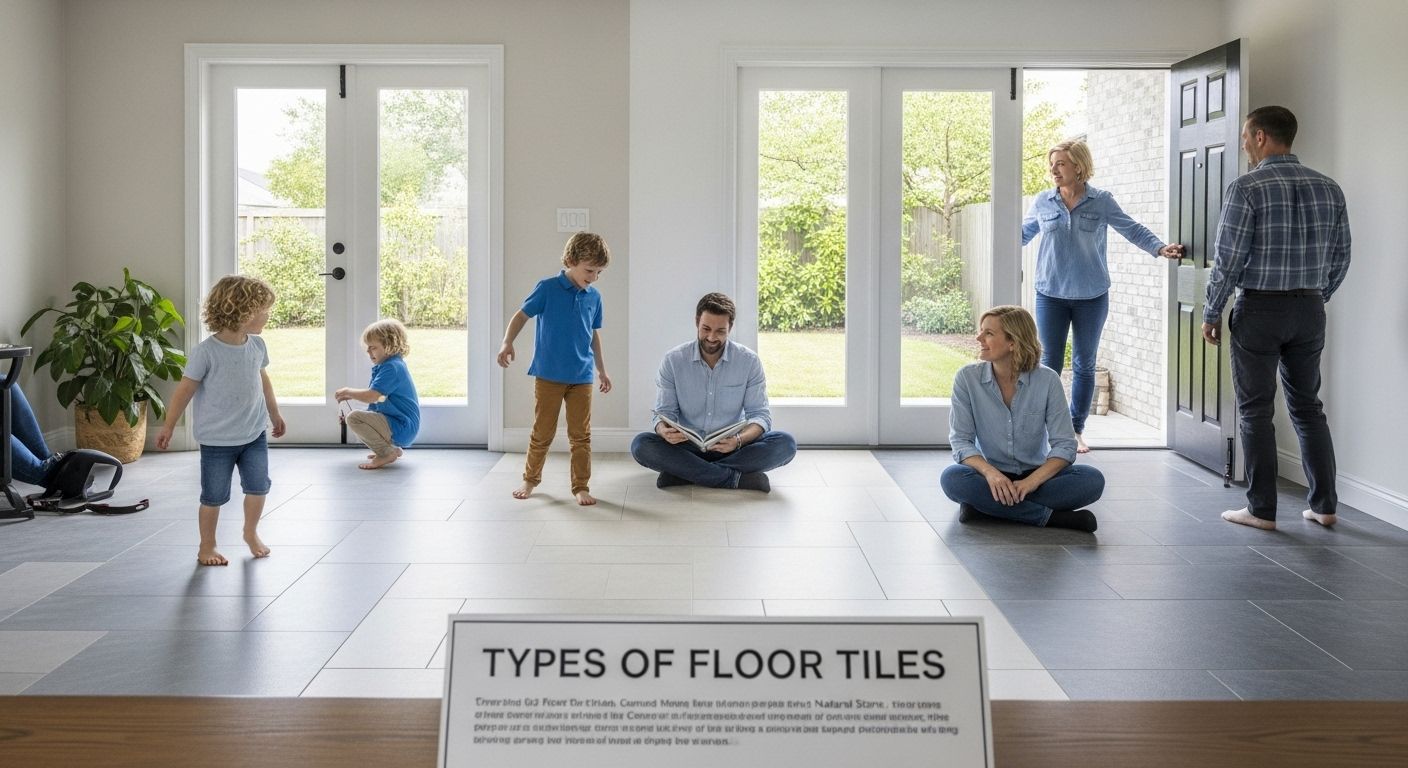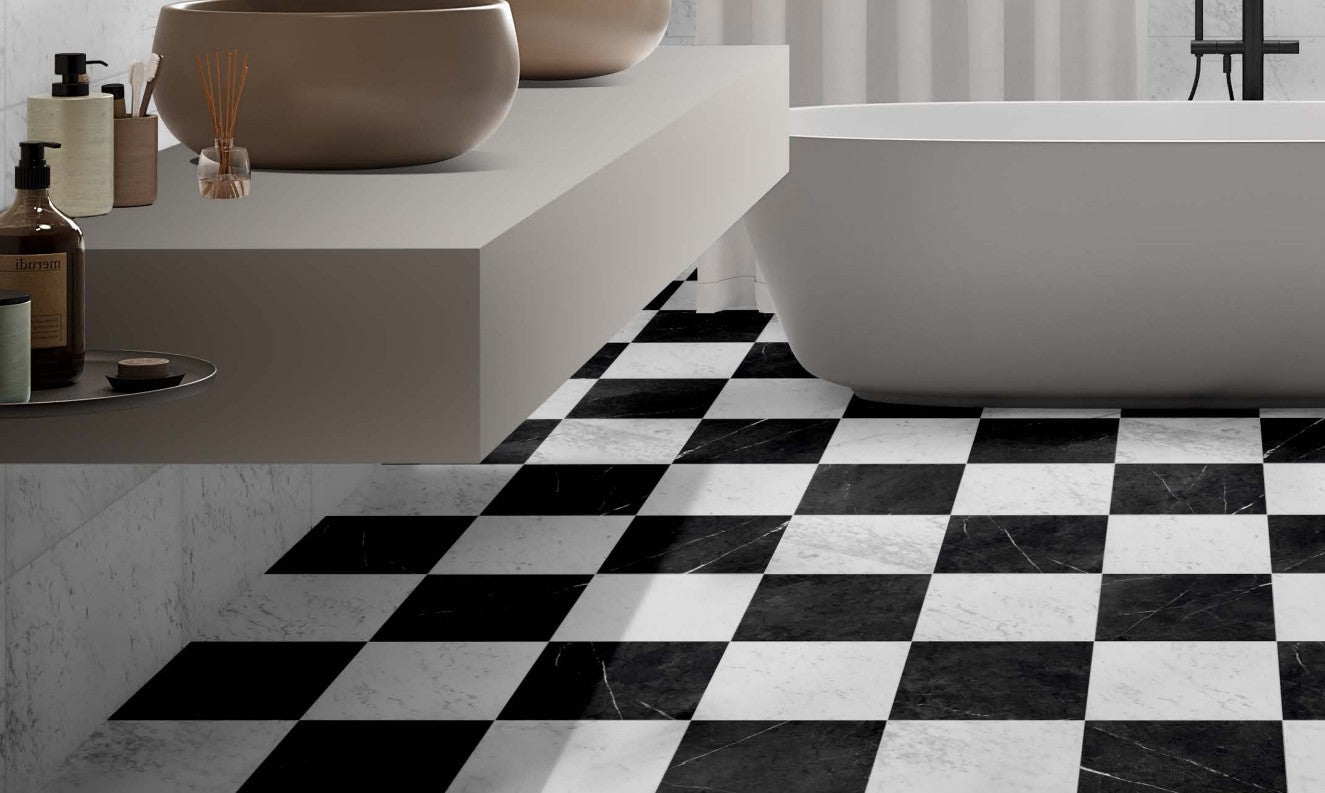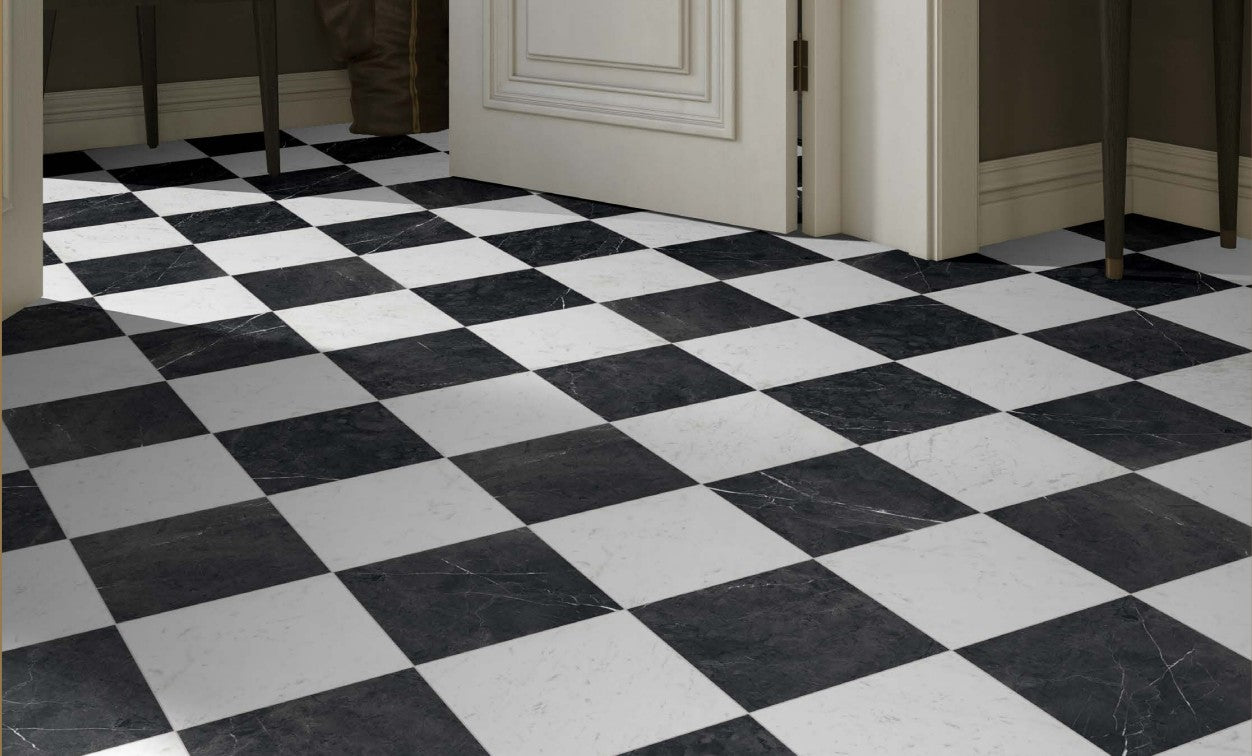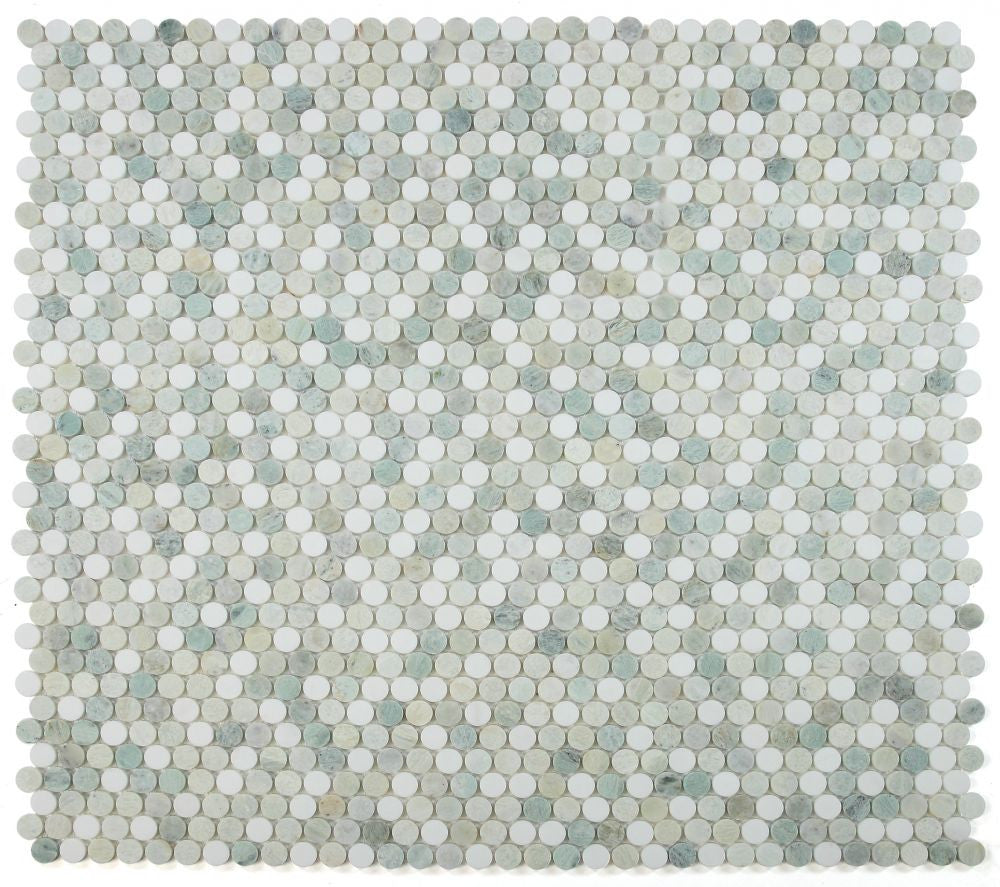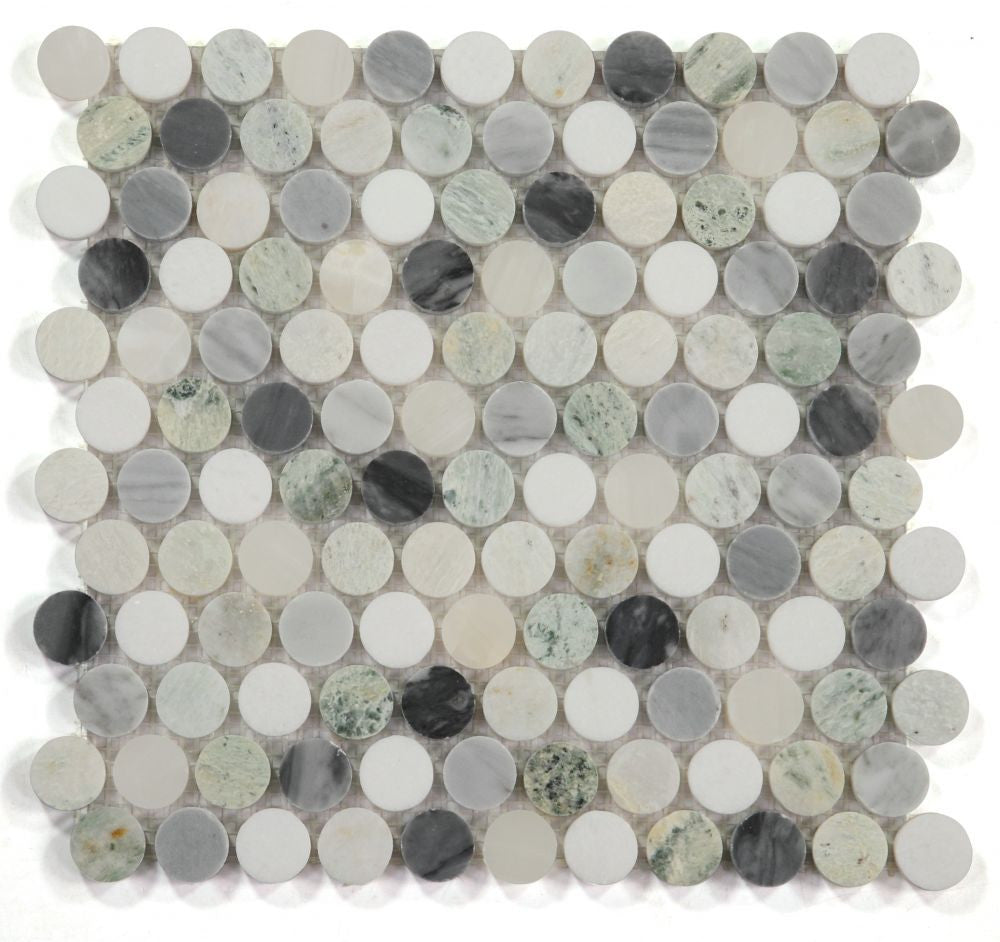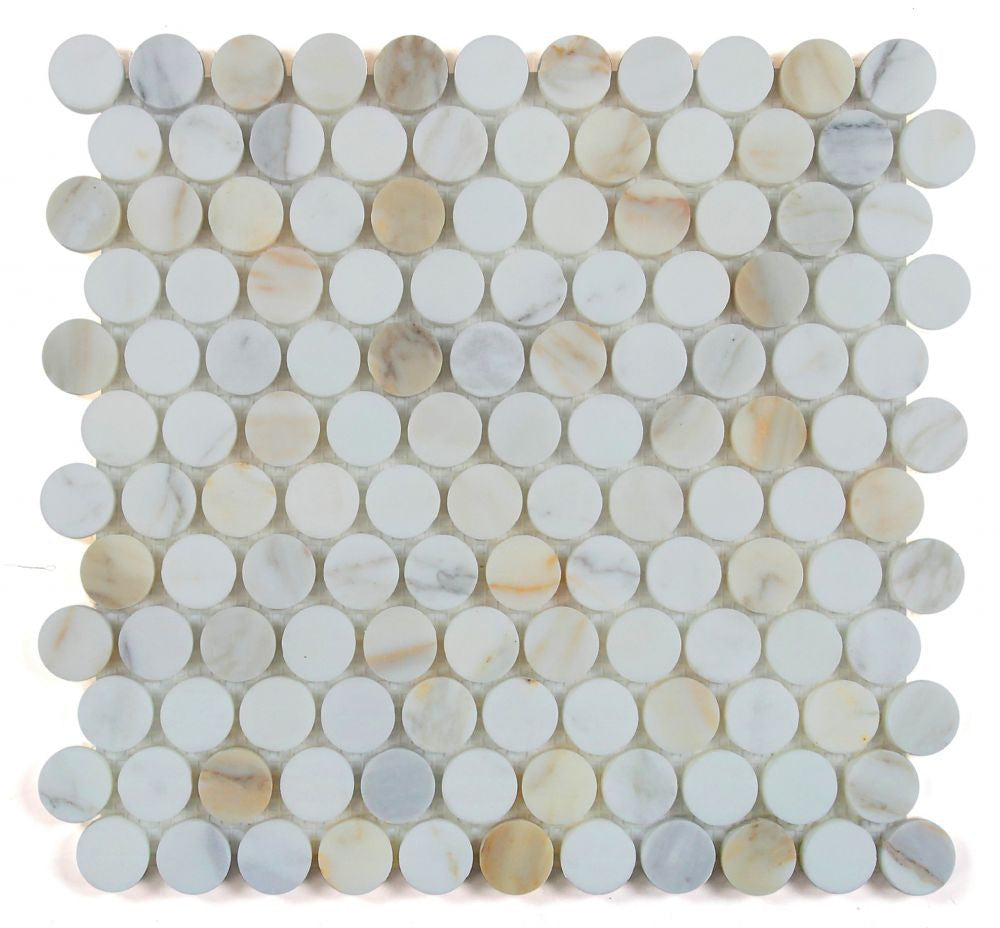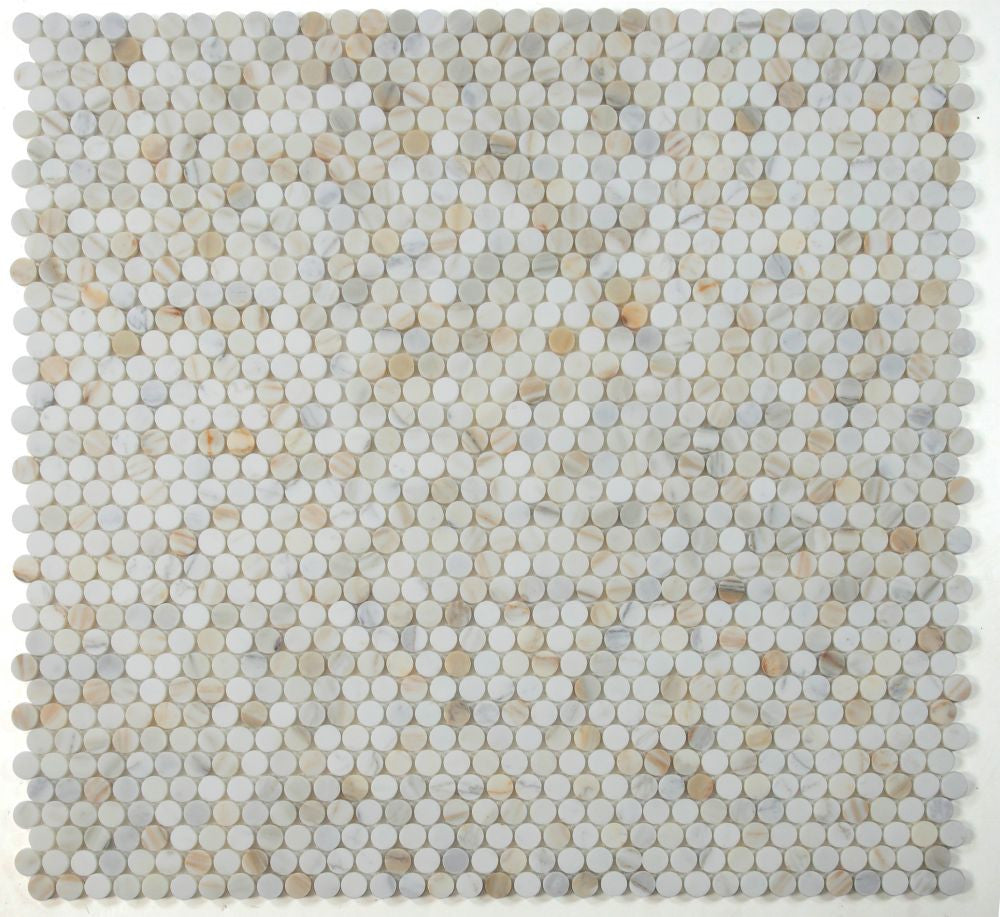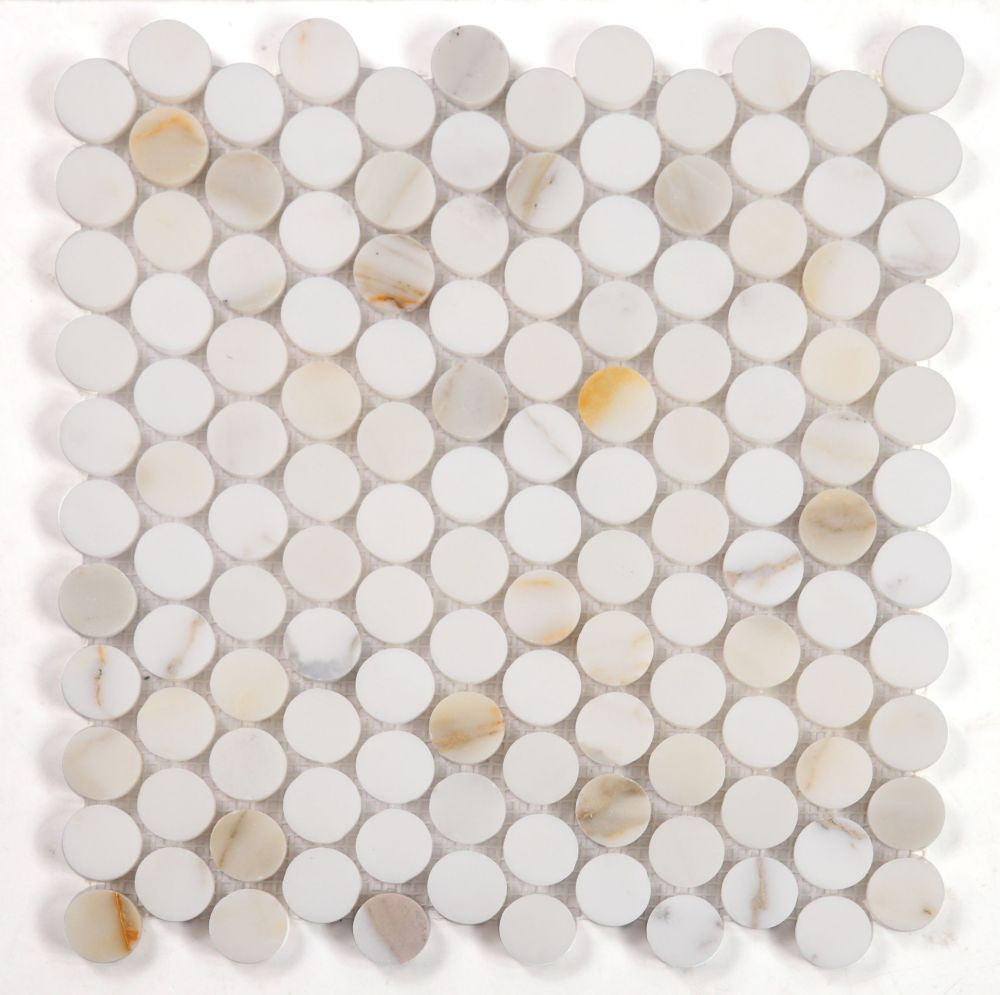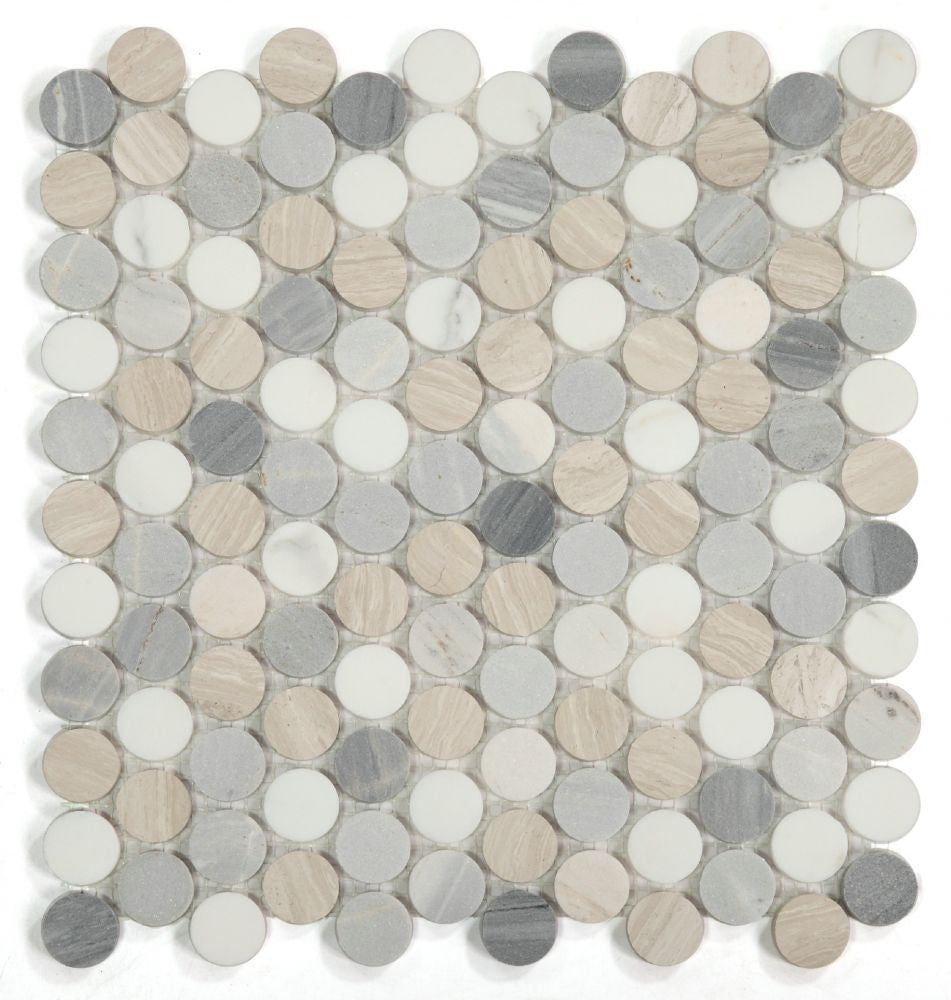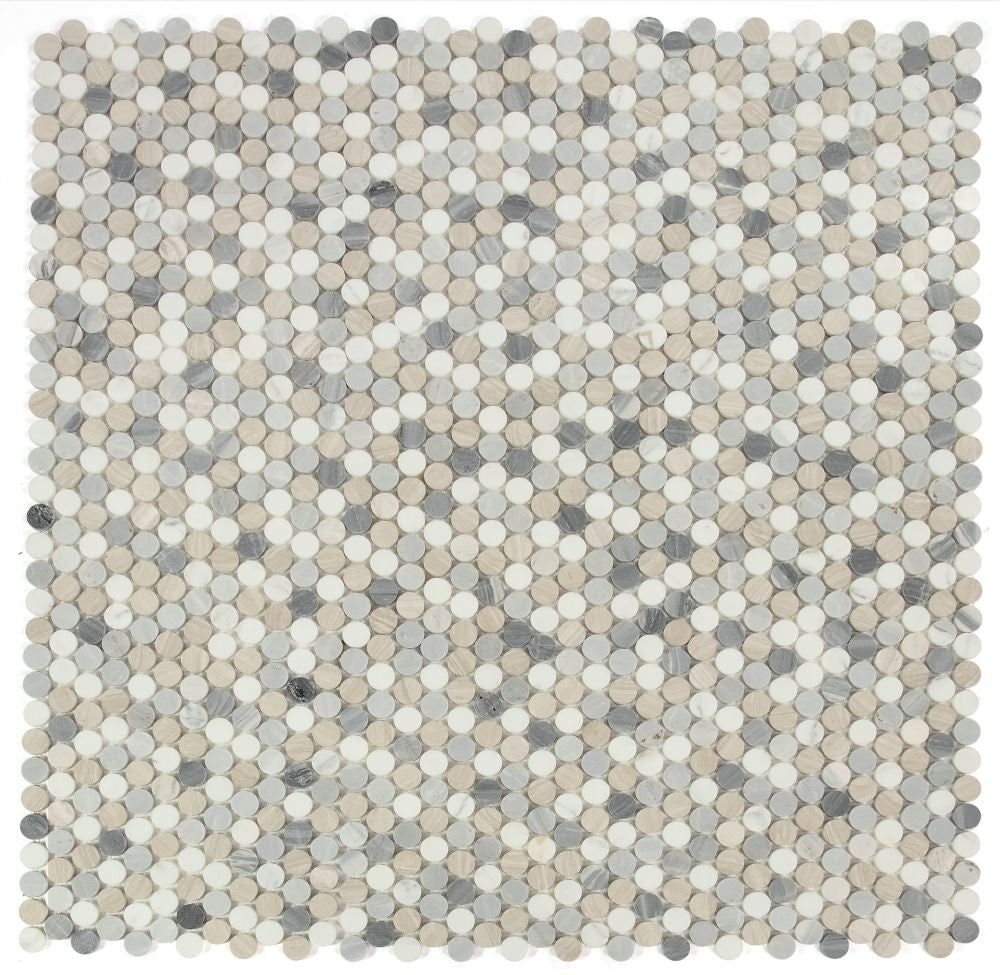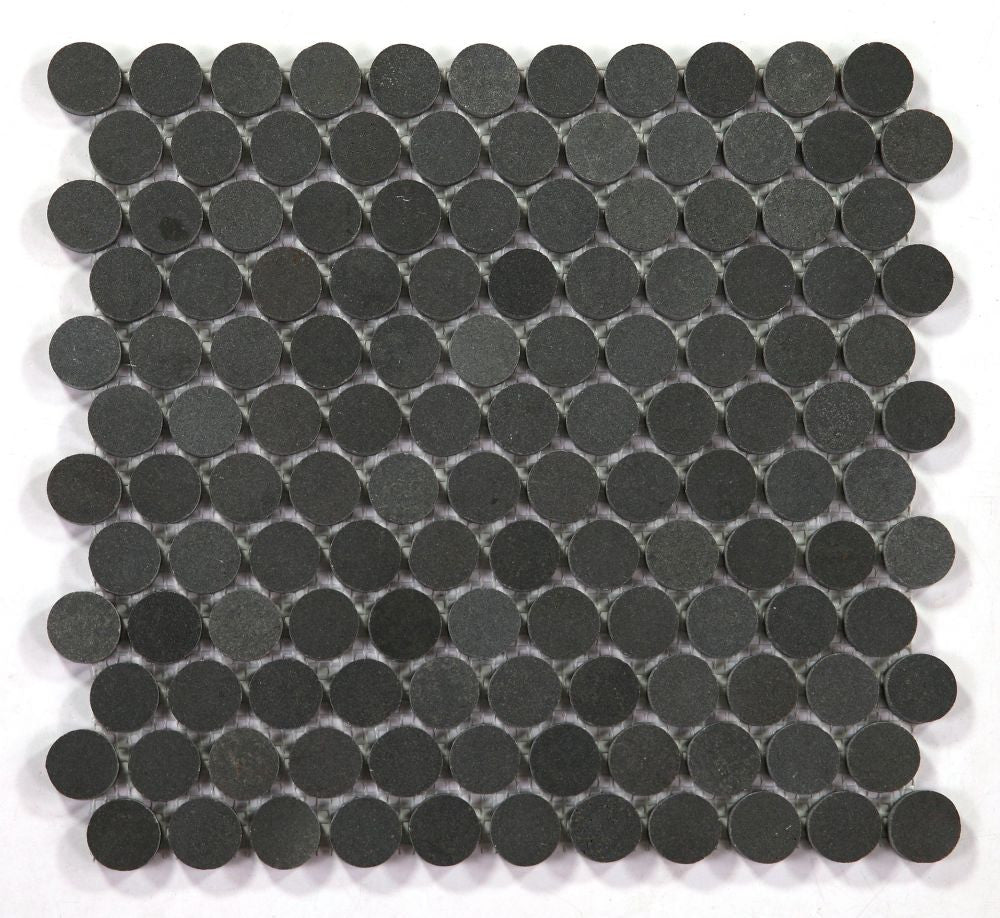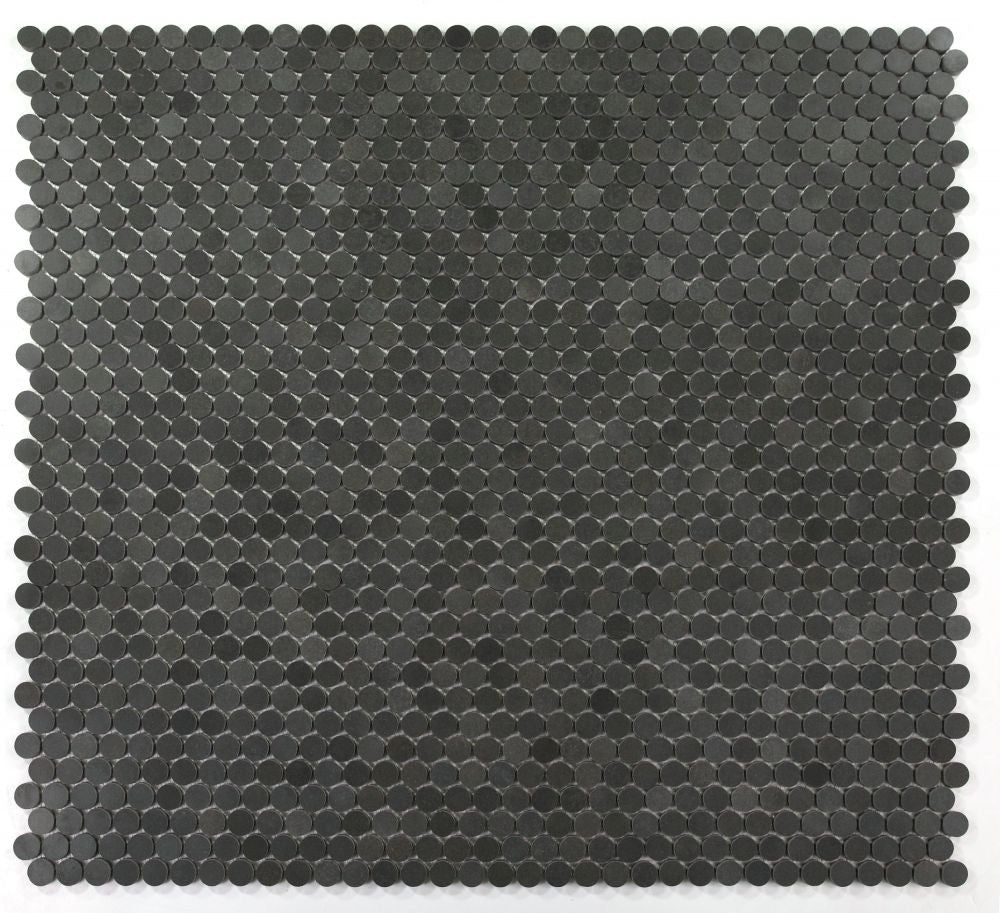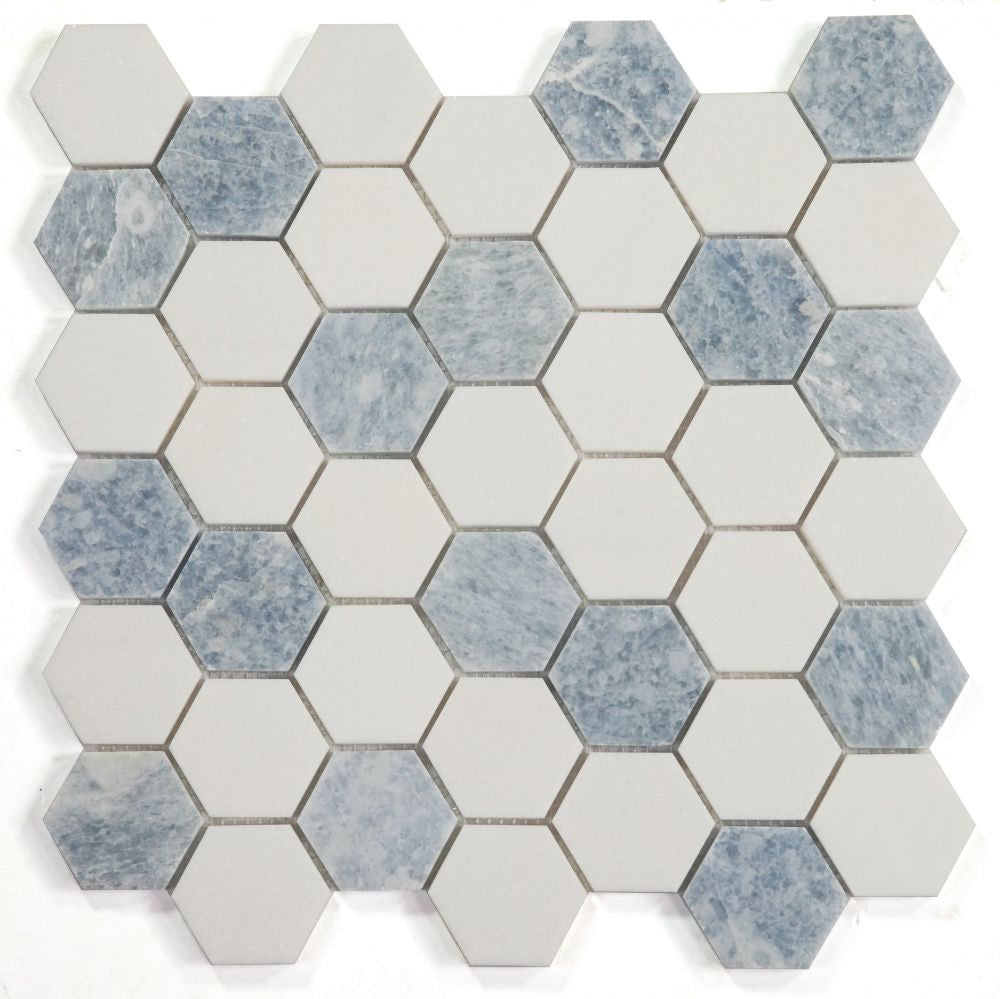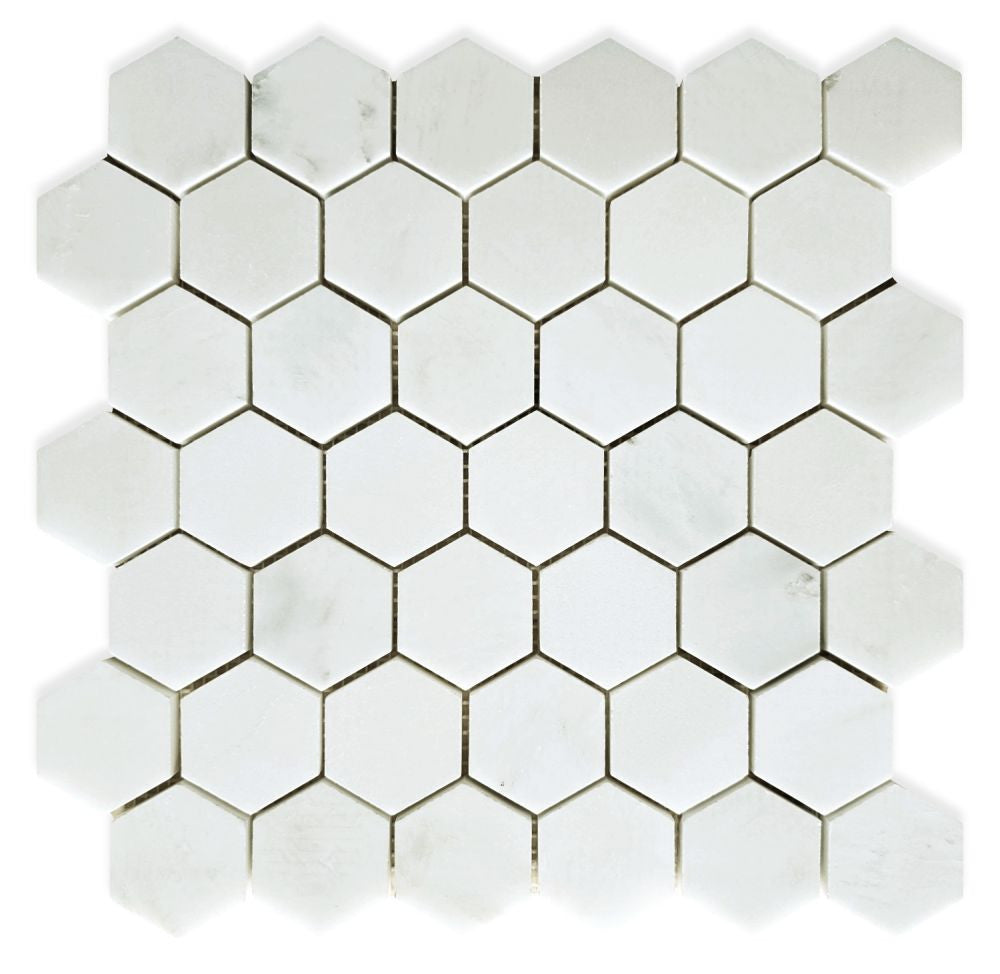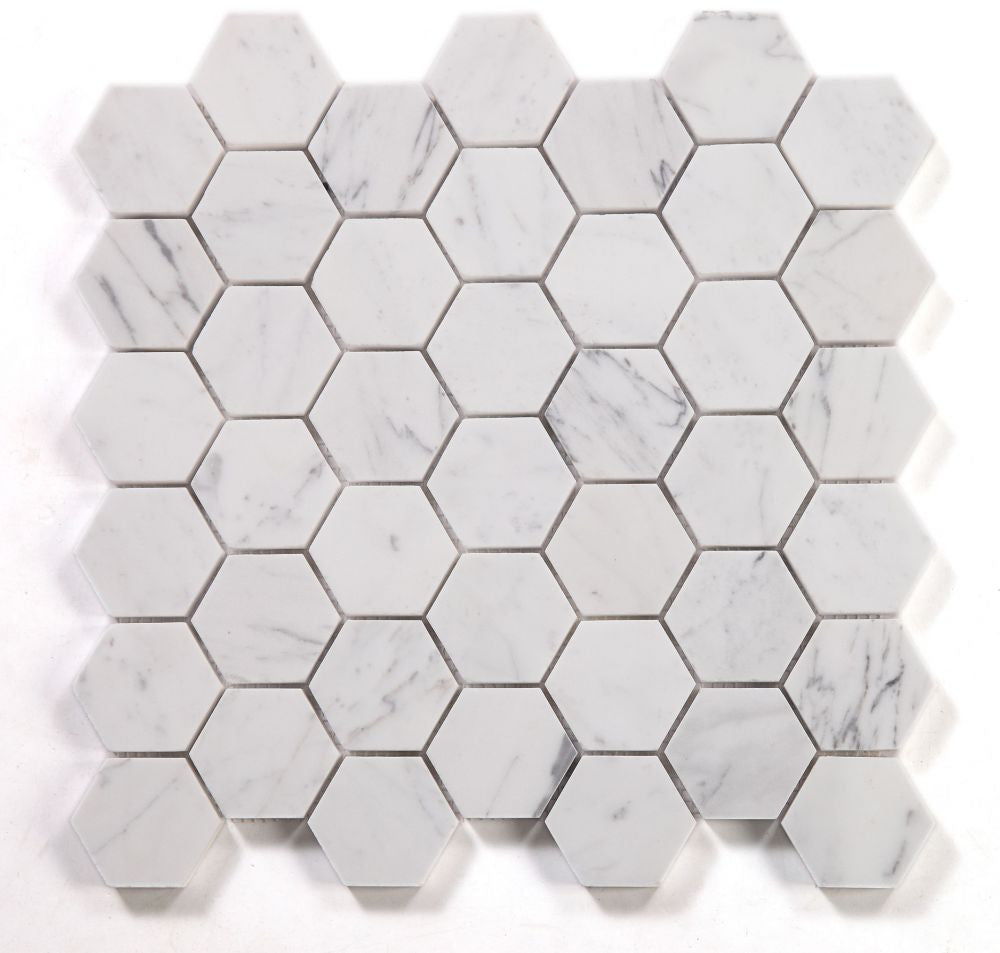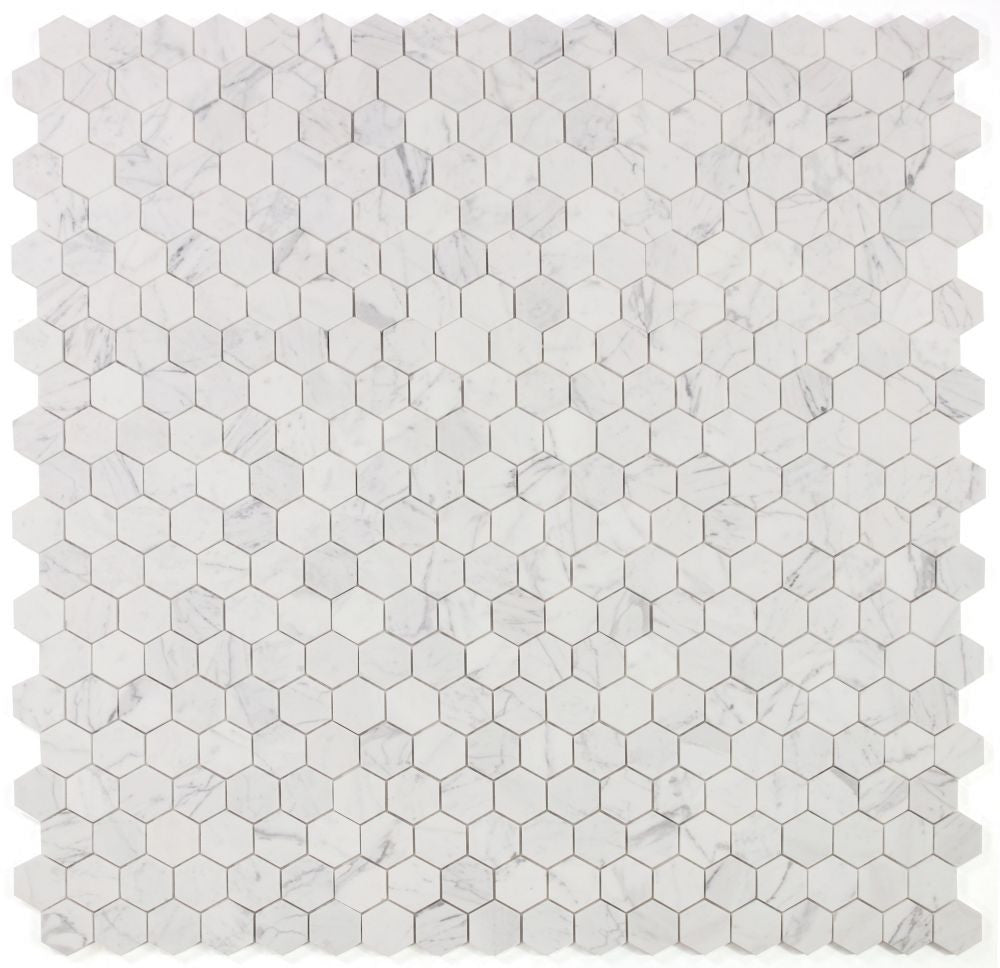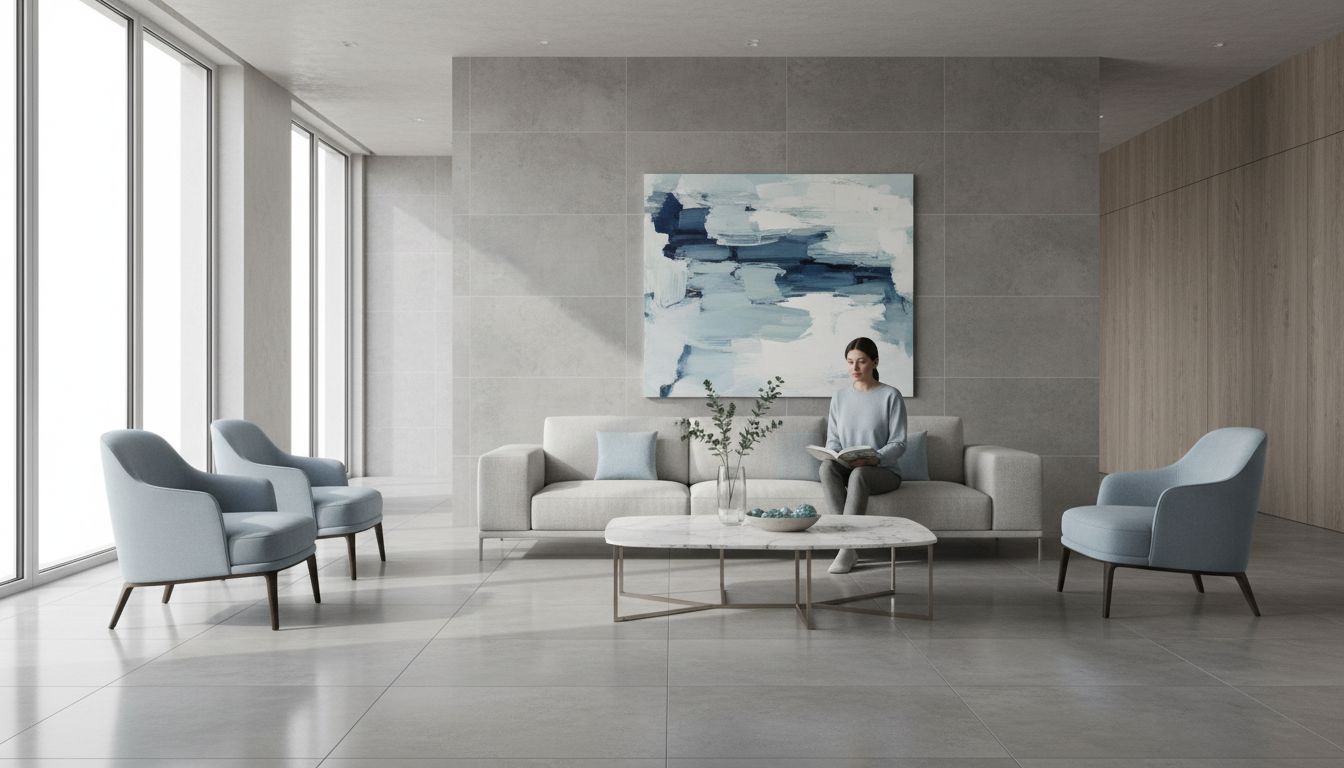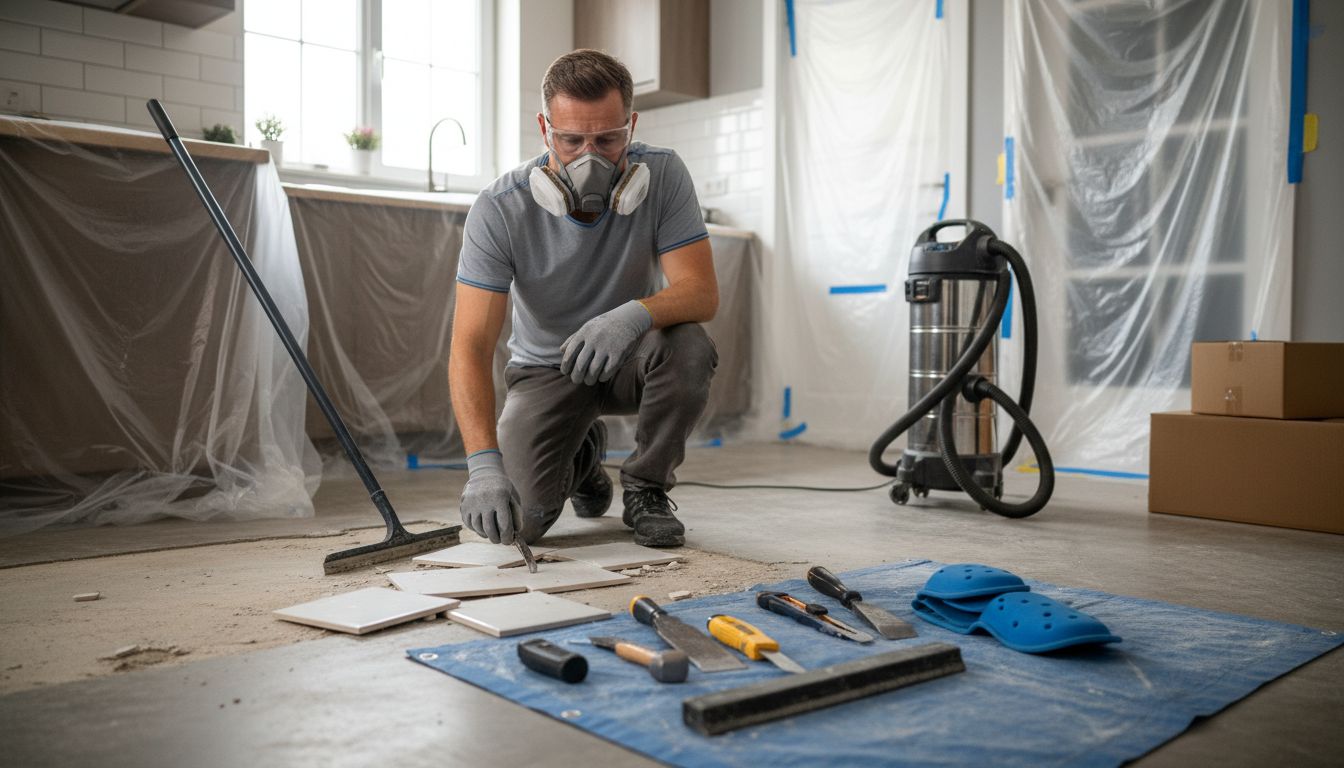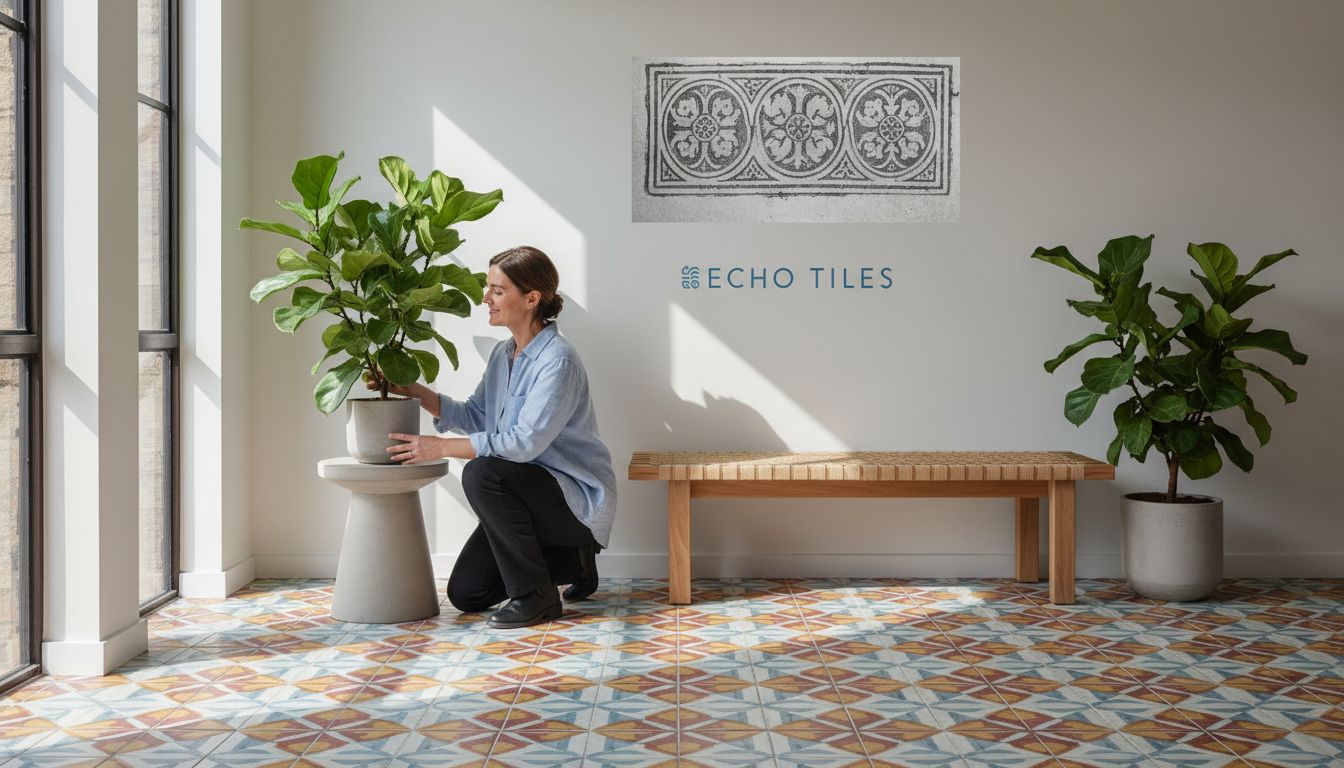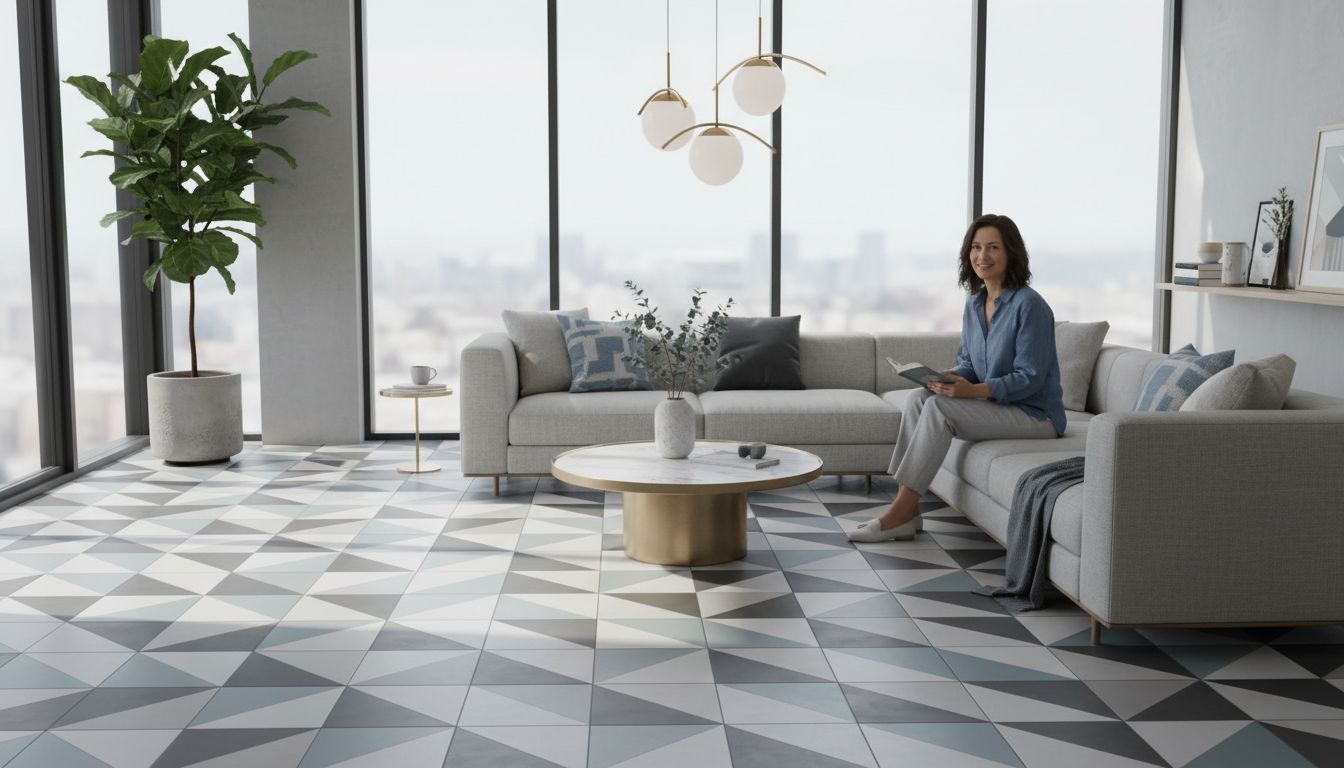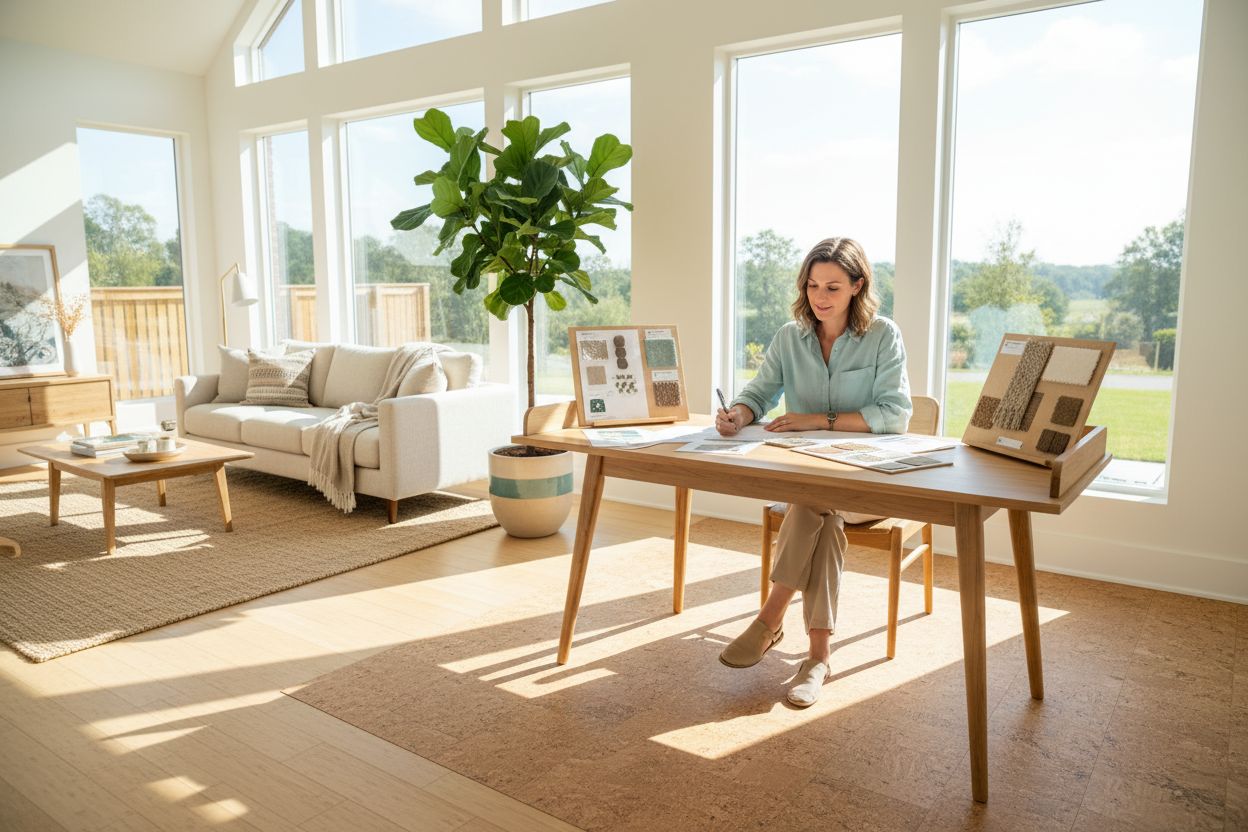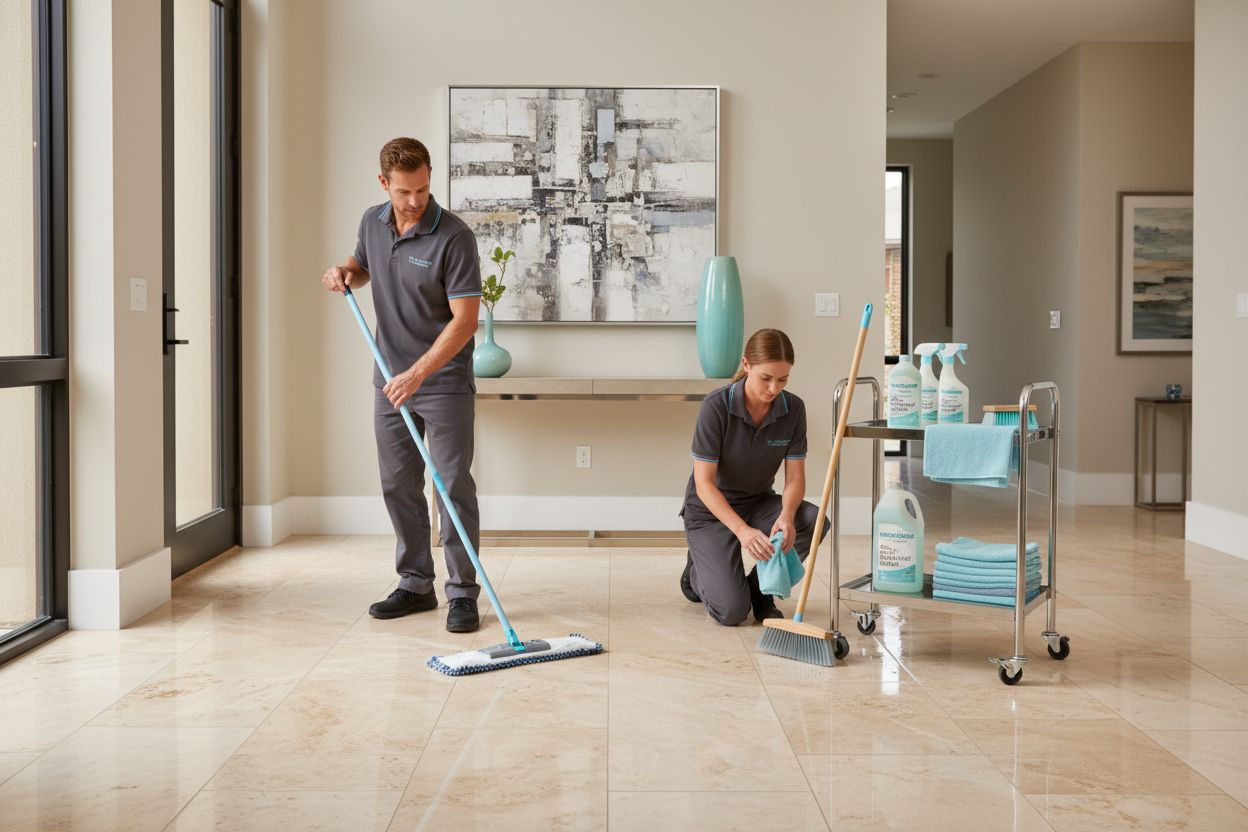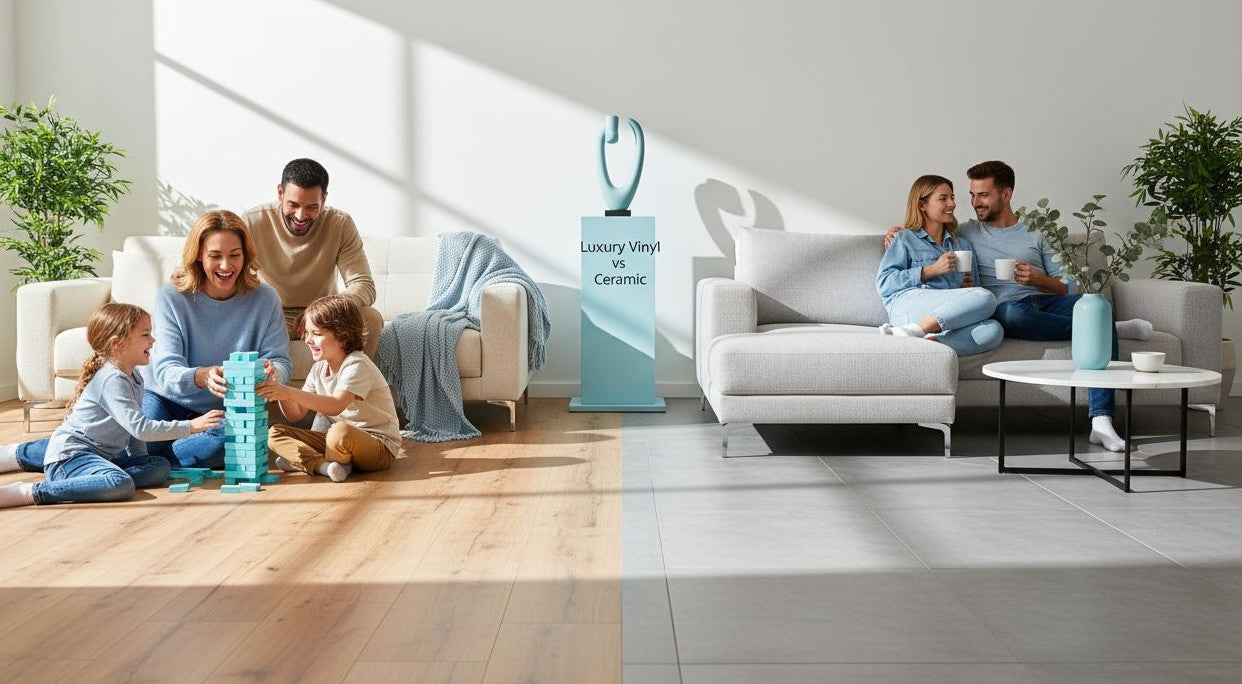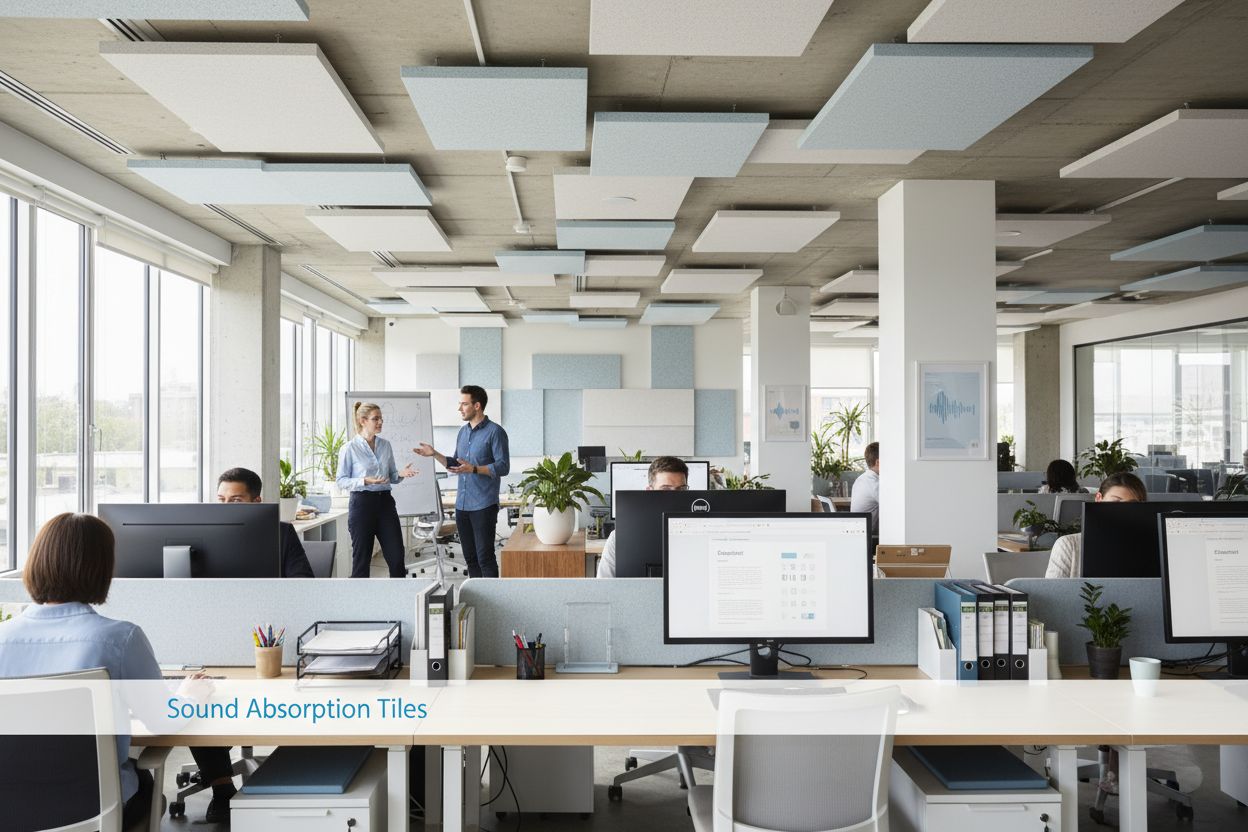Floor tiles are everywhere, from sleek kitchens to bustling shopping centers, and they do a lot more than just cover concrete. The global tile market is projected to hit over $500 billion by 2027, reflecting how much we rely on these everyday surfaces. Yet most people have no idea tiles are engineered with advanced materials and technology that go beyond looks and durability—what goes under your feet is more complex and mission-critical than you might think.
Table of Contents
- Defining Floor Tiles: What Are They and Their Purpose?
- Exploring the Different Types of Floor Tiles and Their Characteristics
- Why Choosing the Right Type of Floor Tile Matters
- How Floor Tiles Contribute to Interior Design and Functionality
- Practical Considerations: Costs, Maintenance, and Durability of Various Floor Tiles
Quick Summary
| Takeaway | Explanation |
|---|---|
| Select tiles based on usage environment | Choose tiles that meet specific performance needs for different areas, like moisture resistance in bathrooms or durability in kitchens. |
| Consider long-term costs, not just initial price | Evaluate the total cost including installation and maintenance to ensure lasting value and avoid frequent replacements. |
| Understand material properties for informed choices | Different tiles have unique characteristics such as water absorption rates and durability, impacting their suitability for specific areas. |
| Prioritize aesthetics alongside functionality | Choose tiles that enhance visual appeal while also providing desired practicality and performance features tailored to your design needs. |
| Employ expert advice for optimal selection | Consulting with professionals can aid in understanding the best tile options for your space, ensuring both quality and design integrity. |
Defining Floor Tiles: What Are They and Their Purpose?
Floor tiles are specialized surface coverings designed to provide functional and aesthetic solutions for various indoor and outdoor spaces. Unlike traditional flooring materials, tiles offer a unique combination of durability, design flexibility, and performance characteristics that make them an essential element in modern architecture and interior design.
The Fundamental Composition of Floor Tiles
At their core, floor tiles are manufactured materials crafted from different substances such as ceramic, porcelain, natural stone, glass, or metal. Each material brings distinct properties that determine the tile’s performance, appearance, and suitability for specific environments. The manufacturing process involves carefully selecting raw materials, shaping them into uniform pieces, and subjecting them to high-temperature firing or specialized treatment processes.
According to the National Park Service, floor tiles serve multiple critical functions in building design:
- Providing wear-resistant surface protection
- Creating hygienic and easy-to-clean flooring solutions
- Offering decorative and aesthetic enhancements
- Improving overall building functionality
Purpose and Strategic Applications
The versatility of floor tiles extends far beyond simple ground coverage. These materials are strategically employed in residential, commercial, and industrial settings to address specific performance requirements. Homeowners might select porcelain tiles for high-traffic kitchen areas, while commercial spaces could utilize industrial-grade ceramic tiles for durability and ease of maintenance.
Key considerations when selecting floor tiles include:
- Wear resistance and longevity
- Water and moisture tolerance
- Aesthetic compatibility with existing design schemes
- Installation complexity and maintenance requirements
By understanding the fundamental characteristics and diverse applications of floor tiles, property owners and designers can make informed decisions that balance functional performance with visual appeal. The right tile selection can transform a simple floor into a statement of style, durability, and practical engineering.
Exploring the Different Types of Floor Tiles and Their Characteristics
Floor tiles represent a sophisticated and versatile flooring solution with an extensive range of materials, styles, and performance characteristics. Understanding the nuanced differences between various tile types empowers homeowners and designers to make informed decisions that align with specific functional and aesthetic requirements.
Ceramic and Porcelain Tile Varieties
Ceramic and porcelain tiles stand as foundational materials in the floor tile landscape. According to Flooring Technology Research, these materials offer distinct advantages:
- Ceramic Tiles: Crafted from clay mixtures and fired at moderate temperatures, these tiles provide excellent versatility and affordability
- Porcelain Tiles: Manufactured using denser clay and fired at higher temperatures, resulting in superior durability and water resistance
- Glazed Ceramic Tiles: Feature a protective surface layer offering enhanced stain and scratch resistance
Specialized Tile Materials and Applications
Beyond traditional ceramic options, floor tiles encompass a diverse array of materials tailored to specific environmental demands. Natural stone tiles like marble, granite, and slate introduce organic textures and unique visual characteristics. Synthetic options such as luxury vinyl tiles for elegant spaces provide cost-effective alternatives with impressive design flexibility.
Key performance considerations for selecting floor tiles include:
- Moisture and water absorption rates
- Impact and wear resistance
- Temperature and thermal shock tolerance
- Aesthetic compatibility with existing design schemes
Each tile material presents unique advantages, whether you seek the timeless elegance of natural stone, the practical durability of porcelain, or the design versatility of modern synthetic options. By carefully evaluating material properties, installation requirements, and long-term performance expectations, you can select floor tiles that transform spaces with both functional excellence and visual sophistication.
Below is a comparison table outlining the unique characteristics, advantages, and differences between some of the most common types of floor tiles mentioned in the article.
| Tile Type | Fundamental Material | Key Characteristics | Ideal Environments |
|---|---|---|---|
| Ceramic | Clay mixtures | Versatile, affordable | Residential, light commercial |
| Porcelain | Dense clay | Highly durable, water-resistant | High-traffic, moisture-prone |
| Glazed Ceramic | Ceramic with glaze layer | Stain & scratch resistance | Kitchens, bathrooms |
| Natural Stone | Marble, granite, slate, etc. | Organic texture, unique visuals | Luxury, statement areas |
| Luxury Vinyl Tile | Synthetic materials | Cost-effective, flexible design | Quick updates, varied spaces |

Why Choosing the Right Type of Floor Tile Matters
Selecting the appropriate floor tile involves more than aesthetic preferences. It requires a strategic approach that considers multiple performance factors, environmental conditions, and long-term durability. The consequences of an uninformed tile selection can significantly impact a space’s functionality, maintenance requirements, and overall design integrity.
Performance and Environmental Compatibility
According to the U.S. National Park Service, tile selection critically influences a surface’s safety, durability, and maintenance profile. Different environments demand specific tile characteristics to ensure optimal performance:
- High-Moisture Areas: Require tiles with low water absorption rates
- Heavy Traffic Zones: Need tiles with superior wear resistance
- Temperature Fluctuating Spaces: Demand tiles with thermal shock tolerance
- Safety-Critical Locations: Necessitate tiles with appropriate slip resistance
Cost and Long-Term Value Considerations
The financial implications of tile selection extend far beyond initial purchase price. Poorly chosen tiles can lead to premature replacement, increased maintenance expenses, and potential structural damage. Proper tile selection represents an investment in both aesthetic appeal and functional longevity. Explore our collection of designer tiles for sophisticated spaces that balance style with practical performance.
Key factors influencing long-term tile value include:
- Initial material and installation costs
- Projected maintenance expenses
- Expected lifespan under specific usage conditions
- Potential repair or replacement requirements
By understanding the nuanced relationship between tile characteristics and environmental demands, property owners can make informed decisions that optimize both visual appeal and functional performance. The right tile not only enhances a space’s aesthetic quality but also provides a durable, low-maintenance surface that withstands daily challenges while maintaining its original beauty.

How Floor Tiles Contribute to Interior Design and Functionality
Floor tiles transcend mere surface coverage, emerging as powerful design elements that simultaneously address aesthetic aspirations and functional requirements. These versatile materials serve as critical components in creating visually compelling and performance-driven interior environments.
Design Transformation and Visual Storytelling
According to the National Park Service, ceramic tiles have historically played a significant role in architectural expression. Modern floor tiles continue this tradition by offering:
- Visual Depth: Creating spatial illusions through color, pattern, and texture
- Design Continuity: Establishing seamless transitions between different areas
- Artistic Expression: Enabling personalized design narratives through unique tile selections
- Spatial Perception: Manipulating room dimensions through strategic tile layouts
Functional Performance and Practical Advantages
Beyond aesthetic considerations, floor tiles deliver substantial functional benefits. Material selection directly influences a space’s performance, durability, and maintenance requirements. Explore our precision grout solutions for seamless tile installations that enhance both visual appeal and long-term tile performance.
Key functional attributes of floor tiles include:
- Enhanced hygiene through non-porous surfaces
- Superior resistance to wear and environmental stressors
- Improved thermal and acoustic properties
- Simplified maintenance and cleaning processes
By integrating design aesthetics with technical performance, floor tiles represent more than passive surface materials. They are dynamic design elements that respond to spatial requirements, personal style preferences, and practical demands, transforming interior environments into sophisticated, functional expressions of individual taste and architectural vision.
Practical Considerations: Costs, Maintenance, and Durability of Various Floor Tiles
Selecting floor tiles requires a comprehensive evaluation of financial investment, long-term performance, and maintenance requirements. Property owners must balance upfront costs with potential lifecycle expenses, understanding that initial price does not always correlate with overall value and functionality.
Cost Analysis and Financial Planning
According to the National Park Service, ceramic tile flooring represents a strategic investment with nuanced financial considerations. The total cost of tile flooring extends beyond material purchase and includes:
- Initial Material Expenses: Per square foot pricing
- Installation Complexity: Professional versus DIY implementation
- Substrate Preparation Costs: Potential underlayment or leveling requirements
- Long-Term Maintenance Investments: Periodic sealing, cleaning, and potential replacement
Durability and Performance Metrics
Tile durability varies significantly across different materials and manufacturing processes. Performance characteristics directly influence maintenance frequency and replacement timelines. Explore our premium tile collections designed for maximum durability that balance aesthetic appeal with robust performance.
Key durability factors include:
- Resistance to cracking and chipping
- Ability to withstand heavy foot traffic
- Resilience against moisture and temperature fluctuations
- Potential for staining or surface degradation
Successful tile selection transcends simple cost comparisons, requiring a holistic understanding of material properties, environmental conditions, and anticipated usage patterns. By carefully evaluating these interconnected factors, property owners can make informed decisions that optimize both financial investment and long-term flooring performance.
The following table summarizes important cost, durability, and maintenance considerations for various floor tile types discussed, making it easier to compare their long-term value and performance.
| Tile Type | Initial Cost | Durability | Maintenance Needs |
|---|---|---|---|
| Ceramic | Low-Moderate | Moderate | Easy, periodic cleaning |
| Porcelain | Moderate-High | High | Low, minimal upkeep |
| Natural Stone | High | Variable (depends on stone) | Regular sealing needed |
| Luxury Vinyl Tile | Low | Moderate | Simple, low effort |
| Glass/Metal | Moderate-High | Moderate (prone to chips) | Specialized cleaning |
Find Your Perfect Floor Tile Solution with TileChoices.com
If you are overwhelmed by the sheer variety of floor tile types and their unique characteristics, you are not alone. Many homeowners and designers struggle to balance style, durability, and maintenance when choosing the right tile. This article highlighted how performance, moisture resistance, cost, and aesthetic compatibility are crucial to avoiding costly mistakes and achieving lasting beauty.

Ready to turn your knowledge into results? Discover premium designer tiles that meet your needs for durability and style. Explore our full range at TileChoices.com, where you can find inspiration, request samples, and get expert guidance for every space. Visit our precision grout solutions to ensure a flawless finish. Take advantage of our curated collections and make your next project worry free. Start now for a floor that lasts and impresses.
Frequently Asked Questions
What types of materials are used in floor tiles?
Floor tiles are made from a variety of materials including ceramic, porcelain, natural stone, glass, and metal. Each material has unique properties that affect durability, appearance, and suitability for different environments.
What are the main differences between ceramic and porcelain tiles?
Ceramic tiles are made from clay mixtures fired at moderate temperatures, offering versatility and affordability. Porcelain tiles, on the other hand, are made from denser clay and fired at higher temperatures, providing greater durability and water resistance.
How do I choose the right floor tile for a high-moisture area?
For high-moisture areas, it is essential to select tiles with low water absorption rates, such as porcelain or glazed ceramic tiles, to prevent damage and maintain hygiene in the space.
What factors should I consider when selecting floor tiles?
When selecting floor tiles, consider factors such as wear resistance, water and moisture tolerance, aesthetic compatibility, installation complexity, and maintenance requirements for optimal performance and style.

